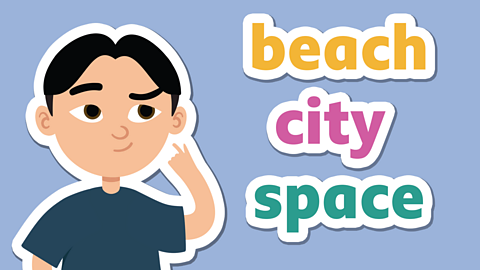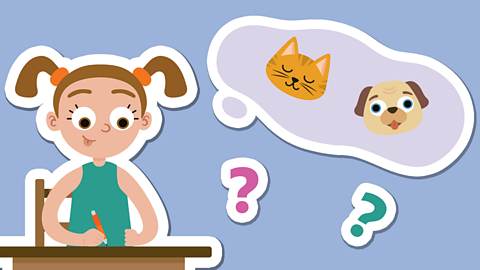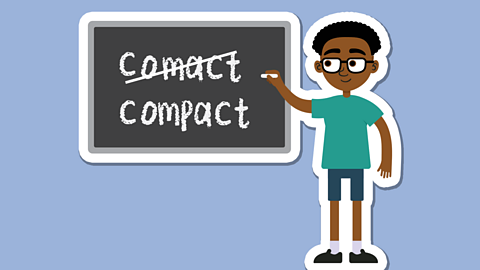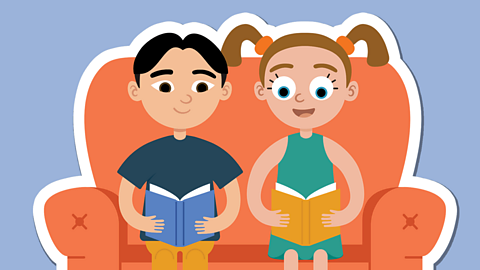Watch: How do you structure a story?

Most stories have a beginning, middle and end.
- In the beginning, establish your setting and characters.
- In the middle, you could add conflict and a problem to solve.
- At the end there could be a dramatic rescue. The ending could be happy or sad.

Narrator: Stories can be complex.
But can also be very simple.
Most stories follow a simple structure of beginning, middle and end.
Don't you just love the funfair, the games, the flashing lights, fantastic!
It's the perfect location for the beginning of our story.
Local Man: Don't ya just love it when the funfair is in town?
Local Woman: Oh yes darling, it's a perfect night, in our perfect little town.
Local Man: What could possibly go wrong?!
Narrator: Now that we've established the location and the characters, we move on to the middle of our story.
Uh oh! Looks like these people aren't the only ones who, like the funfair. Things could get messy!
Local Man: Wait my darling I will protect you!
Narrator: Oh no, the monsters have scared everyone out of the funfair!
The once beautiful place of fun is now, a place of crazy monster madness!
This story is pretty dramatic so far!
But every story needs a good ending.
What's that? Sounds like the cavalry is here!
Local Man: Time to reclaim our funfair darling!
Narrator: Aww a happy ending after all!
Watch: Using a story mountain
Organise your plot and create a great structure with these story mountain tips.
How to create a story structure.
Every story needs a plot: an exciting series of events.
Most stories follow a simple structure that is called the story mountain, but obviously all stories don't have to have a mountain in them.
The foot of the mountain is your opening where you introduce your hero and start setting the scene.
Ah, a knight - a perfect character for your story. Your next stage takes you up thestory mountain. It's called the build up.
Here, you build up the main body of the story. A plot will always be engaging if you add in a conflict, a fight or a mystery to solve.
It seems that the evil wizard in the castle on the other side of the mountain has kidnapped the heir to the throne. What a rascal!
Our knight must do something about this.
Now you're at the top of the mountain where the story peaks and our characters encounter a major problem, obstacle or dilemma.
A dragon! I would consider that a fairly big obstacle and the evil wizard has an army as well. Goodness me. How is the knight ever going to get past them?
Is our knight going to be roasted alive? Like a metal kebab?
This is the most thrilling part of the story. Be sure to keep your readers in suspense.
Next, we need a resolution. How does your character deal with the dilemma?
This is the point at which your character has to solve or resolve a problem to reach their goal.
It's a good idea to try and make your resolution unusual and original.
Well, I didn't see that coming.
Serves you right, you weasel.
At the bottom of the mountain is the ending and conclusion of your story with everything resolved.
Just because it's the end doesn't mean you can't be creative.
You could add an unexpected twist.
Your story needs to engage the audience with an exciting plot and keep them engaged from the opening, through the build up, problem and resolution, right up to the ending on the final page and beyond.
Now, I think I'll have a wild boar cabbage special sandwich but on brown bread or white?
Oh, black it is.
Activity
Play our fun English game Crystal Explorers. gamePlay our fun English game Crystal Explorers
Use grammar, punctuation and spelling skills to explore jungles, caves and tombs on your mission!

More on Creative writing
Find out more by working through a topic
- count4 of 11

- count5 of 11

- count6 of 11

- count7 of 11
